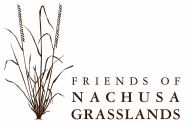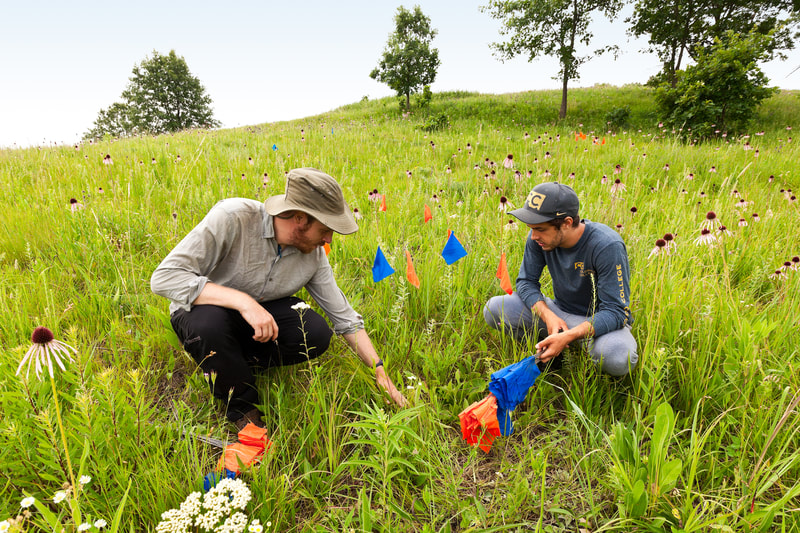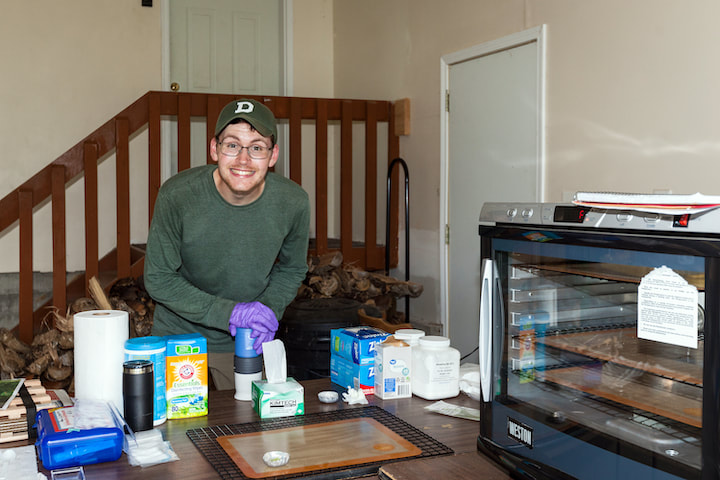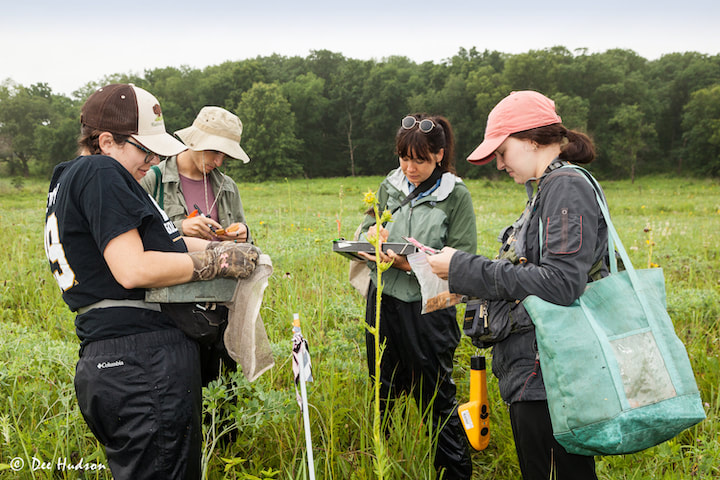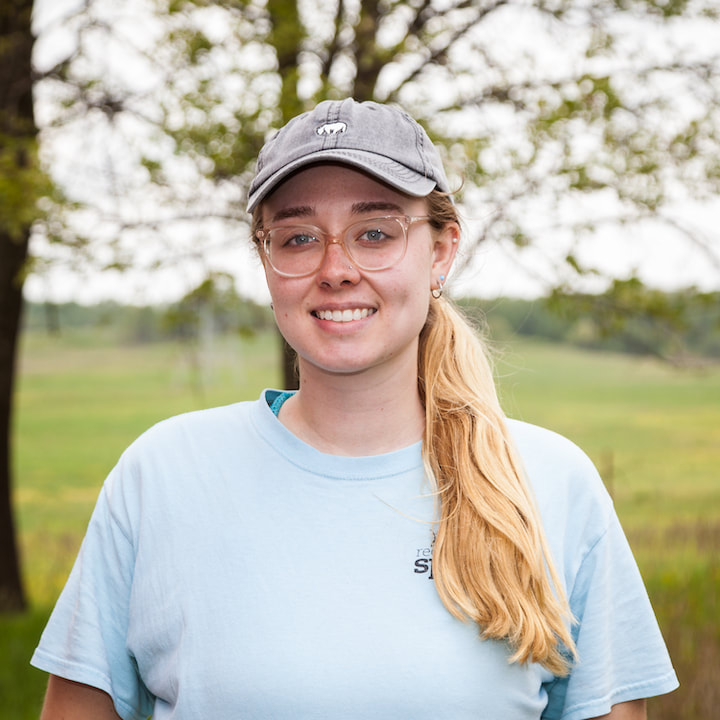Friends of Nachusa Grasslands 2023 Scientific Research Grants – $73,000
To support scientific endeavors, Friends of Nachusa Grasslands awards monetary grants to qualified candidates conducting scientific research significant to Nachusa Grasslands.
Research projects focus primarily on prairie, savanna, wetland, woodland, and stream habitat management, such as prescribed fire, seed collection, weed control, general or specific flora or faunal populations, and natural areas restoration.
Thanks to a 1:1 challenge grant and the generous support of individual donors, organizations, and foundations, Friends has awarded $73,000 for 2023-2024, divided in varying amounts among sixteen researchers.
Research projects focus primarily on prairie, savanna, wetland, woodland, and stream habitat management, such as prescribed fire, seed collection, weed control, general or specific flora or faunal populations, and natural areas restoration.
Thanks to a 1:1 challenge grant and the generous support of individual donors, organizations, and foundations, Friends has awarded $73,000 for 2023-2024, divided in varying amounts among sixteen researchers.
Donations to Friends can be designated to Scientific Research Grants.
2023 Grant Recipients, Projects, and Amounts
|
Kathryn Bloodworth, PhD candidate, University of North Carolina at Greensboro. “Fire effects on multiple ecosystem outcomes: A meta-analysis for the land managers of tallgrass prairie.” This grant will conclude the Friends’ support of a comprehensive three-year effort to understand the role of fire frequency in conserving multiple ecosystem outcomes including but not limited to its effects on birds, insects, small mammals, soil characteristics, woody plants, grasses, and forbs across a wide variety of settings (including Nachusa Grasslands) in the tallgrass prairie region. This analysis should provide land managers with information they need to make vital decisions on fire frequency for specific desired outcomes. $4,873 (in 2023). [email protected]
Bethanne Bruninga-Socolar, PhD, Albright College. “Monitoring Nachusa’s wild bees: Long-term trends and regional importance.” Dr. Bruninga-Socolar and Dr. Sean Griffin will be continuing their 10-year long native bee monitoring program at Nachusa in the context of asking two questions with their data collection: “To what degree is native bee abundance and diversity being maintained at Nachusa?” and by comparing Nachusa’s bee populations with those of nearby prairie preserves, “What role does Nachusa play in maintaining native bee abundance and diversity regionally?” This work will add both depth and breadth to one of the few data sets available on long-term native bee populations. $10,000. [email protected] Reb Bryant, PhD candidate, The University of Kansas. “Testing the effect of native arbuscular mycorrhizal fungi (AMF) on prairie restoration success at Nachusa Grasslands.” This grant will conclude the Friends’ support of a three-year project designed to study the question of whether or not the inoculation of specific native arbuscular mycorrhizal fungi (AMF) into the soil of greenhouse grown plants can facilitate the plant abundance of “hard-to-establish” plant species in prairie restorations. If successful, this work may provide a “library” of AMF cultures that can be used to increase biodiversity in future restorations. $14,525 (paid in full in 2021). [email protected] Molly Carlson, MS candidate, University of Illinois at Urbana-Champaign. “Predation on burrowing crayfish at Nachusa Grasslands.” This study will follow up on the 2022 survey of Nachusa crayfish completed by M. Carlson, Dr. Christopher Taylor, and D. Swedberg. The goal of this year’s research is to examine the predation dynamics between Nachusa’s burrowing crayfish and the preserve’s other prairie and wetland species. The project will provide the first long-term video documentation of predation events on burrowing crayfish which play significant ecological roles but are understudied. $4,925. [email protected] Andrew Davies, MS candidate, Northwestern University and Chicago Botanic Garden. “Genetic diversity and fitness decline in kittentails (Synthyris bullii).” Kittentails are threatened plants in Illinois, and Nachusa’s populations of kittentails have some of the highest genetic diversity of twelve populations sampled in Illinois and Indiana. Seeds from two of Nachusa’s kittentail populations (along with seeds from four other off-site populations) will be used in a garden drought experiment at the Chicago Botanic Garden to compare drought tolerance of their offspring. The goal of this particular experiment is to provide data on the plant’s ability to persist through the increasing summer drought conditions predicted by climate change models. The larger goal of this genetic research is to study whether genetic variation among populations can be used to sustain kittentail populations both at Nachusa and regionally. $8,000. [email protected] Luke Daniel Fannin, PhD candidate, Dartmouth College. “Functional ecology of competing photosynthetic pathways in a North American tallgrass prairie.” This grant supports additional data collection to answer a question first investigated at Nachusa by L. Fannin in 2021. He will be collecting and analyzing additional plant and bison dung samples in order to compare bison grass preferences during different seasons of the year. By continuing to compare certain functional traits of specific grass species (fiber, toughness, abrasivity) with bison forage selectivity, he may provide insight into bison foraging decisions and the potential long-term effects of bison grazing on Nachusa’s plant diversity. $1,644. [email protected] Jacob R. Hopkins, PhD and Andrea Fetters, PhD, The Ohio State University. “Grazing effects on plant-pollinator-microbe interactions.” Ecological research often focuses on the effects of one component on just one part of the whole ecosystem. The goal of this research is to quantify the effect of bison grazing on the interactions of three ecosystem components functioning as a unified system. Specifically, Dr. Hopkins and Dr. Fetters have designed an experiment to explore the effect of bison grazing on the collective interactions of the grazed plants, their pollinators, and the underground microbial underpinnings of the plants. $4,400. [email protected]; [email protected] Robert Jean, PhD, Environmental Solutions and Innovations. “Community dynamics, flower preferences, and parasite loads of native bees and domesticated honey bees at Nachusa Grasslands.” This study will revisit the 2022 study of differences in bee community composition, floral preferences, and parasite loads of native bees and domesticated honey bees at various distances from a large honey bee aggregation/apiary located adjacent to Nachusa Grasslands. This study may shed some light on what effect (if any) domesticated bees have on native bee populations including the federally endangered Rusty Patched Bumble Bees residing at Nachusa. $8,000. [email protected] |
Richard King, PhD, Northern Illinois University, Thomas B. Anton and David Mauger, Independent researchers. “Head-starting: A new phase in Blanding’s Turtle management at Nachusa Grasslands.” This grant represents the Friends’ ongoing support for the multi-organization effort to increase the population and promote the persistence of state-endangered Blanding’s turtles. During 2023, this research team will be 1) trapping Blanding’s turtles trying to capture animals released as hatchlings and head-starts in previous years, 2) tracking adult females to monitor egg development and protect nests from predation, 3) tracking 2022 head-starts with operational radio transmitters, and 4) attaching tracking transmitters to any additional juveniles found onsite. $4,750. [email protected], [email protected], [email protected]
Joshua Klostermann, PhD candidate, University of Missouri. “Multitrophic interactions among insects nesting in bison wallows.” During his 2022 field season at Nachusa, J. Klostermann discovered unknown host/parasite interactions between bee, wasp, and fly species living in bison wallow sites at Nachusa. Soil samples in conjunction with emergence trapping and photography have the potential to reveal how the wallow habitat is supporting these organisms and their interactions. This grant supports the ongoing investigation of these rarely studied communities. $1,000. [email protected] Ashley McDonald, PhD candidate and Jennifer Schultze, MS candidate, Southern Illinois University. “Assessing the efficacy of predatory control and prevalence of zoonotic pathogens in northern Illinois raccoons.” This ongoing study at several sites in northern Illinois is providing data to 1) determine the long-term feasibility and efficacy of predator (raccoon) control and 2) determine the prevalence of zoonotic pathogens in raccoons. It uses camera traps to monitor the distribution of raccoons before, during, and after removal. Tissue samples from the humanely trapped raccoons are analyzed for nine pathogens to determine the raccoons’ potential human health impact. Understanding the efficacy of raccoon control is important for Nachusa managers because of the efforts being made to support Blanding’s turtle populations as well as other threatened and endangered raccoon prey species. $3000. ashley.g.mcdonald@siu, [email protected] Susan McIntyre, MS, Assistant Scientist, Illinois Natural History Survey. “Vegetative succession and seed fate in bison wallows.” Bison wallows are of great interest to stewards at Nachusa. Are abandoned wallows an opportunity for overseeding less-competitive conservative plant species? Are they instead just opportunities for weedy invasives to take root and spread into the surrounding area? Or does it depend on the floristic quality of the surrounding area or the soil type? Or maybe it depends on how many and what kinds of seeds are carried away by ants and other consumers? This ongoing study investigates these questions using vegetative sampling, soil sampling, seed separation techniques, seed predation studies, and time-lapse photography. $6,558. [email protected] Gavin McNicol, PhD, University of Illinois at Chicago. “Effects of ecosystem type and environmental gradients on native Midwest ecosystem-climate interactions.” Dr. McNicol and his team will continue quantifying the greenhouse gas (GHG) balance of Nachusa’s prairies, woodlands, and wetlands. Measurements of plant photosynthetic uptake of carbon dioxide will be added to the data collected on respiration of carbon dioxide and methane and nitrous oxide fluxes in 2022. Additionally, they will investigate the effects of elevational gradients, plant communities within an ecosystem, seasonal changes in soil moisture and temperature regulation, and local weather conditions on GHG dynamics. $8000. [email protected] Erin Rowland-Schaefer, PhD candidate, Northern Illinois University. “Understanding complex direct and indirect drivers of tallgrass prairie small mammals across scales.” This project continues the long-term study of small mammal populations at Nachusa relative to its plant communities and its management regimens such as prescribed fire. $3000. [email protected] Pallavi Singh, PhD, Northern Illinois University. “Identifying factors that influence bison health.” This ongoing study is designed to assess the intestinal microbial population of bison at Nachusa and the various factors that influence it. Among those factors are seasonal temperature and seasonal dietary variations. $1850. psingh1@niu.edu Elizabeth Small, MS candidate, Northern Illinois University. “Impact of plant composition, height, thatch, and density on small mammals in restored tallgrass prairies.” This grant supports the decade-long work on small mammal populations at Nachusa. Specifically, this study will examine how plant community composition, height, thatch, and density can affect the diversity, survival, and abundance of small mammals. $3000. [email protected] To receive information about the 2025 grant guidelines and application process that will be available in the late summer, contact [email protected]. |
Past research projects supported by the Friends are listed on each year's Science Grants page:
UPDATED 02/2024
